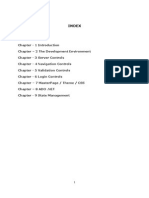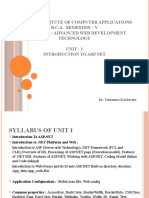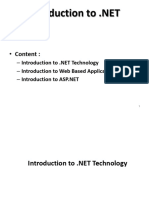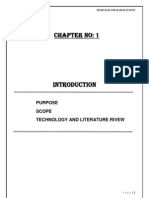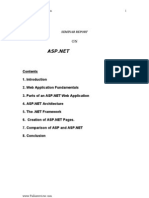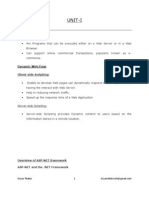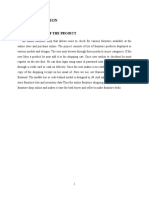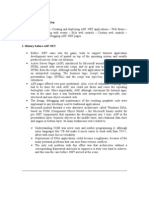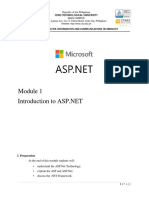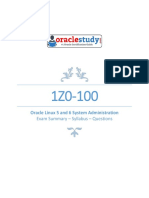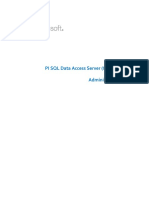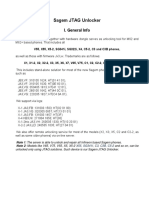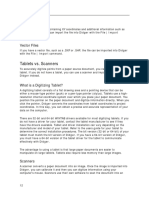0% found this document useful (0 votes)
15 views28 pagesIntro
The document provides an overview of ASP.NET, including its introduction, features, and comparison with Classic ASP. It outlines the .NET framework, its components, limitations, and the various versions of ASP.NET. Additionally, it discusses the prerequisites for using ASP.NET, the environments required, and the process of hosting ASP.NET pages.
Uploaded by
DaudCopyright
© © All Rights Reserved
We take content rights seriously. If you suspect this is your content, claim it here.
Available Formats
Download as PPTX, PDF, TXT or read online on Scribd
0% found this document useful (0 votes)
15 views28 pagesIntro
The document provides an overview of ASP.NET, including its introduction, features, and comparison with Classic ASP. It outlines the .NET framework, its components, limitations, and the various versions of ASP.NET. Additionally, it discusses the prerequisites for using ASP.NET, the environments required, and the process of hosting ASP.NET pages.
Uploaded by
DaudCopyright
© © All Rights Reserved
We take content rights seriously. If you suspect this is your content, claim it here.
Available Formats
Download as PPTX, PDF, TXT or read online on Scribd
/ 28


